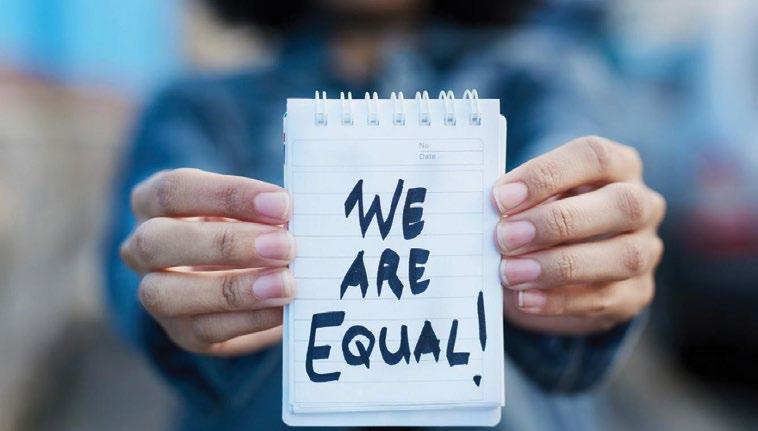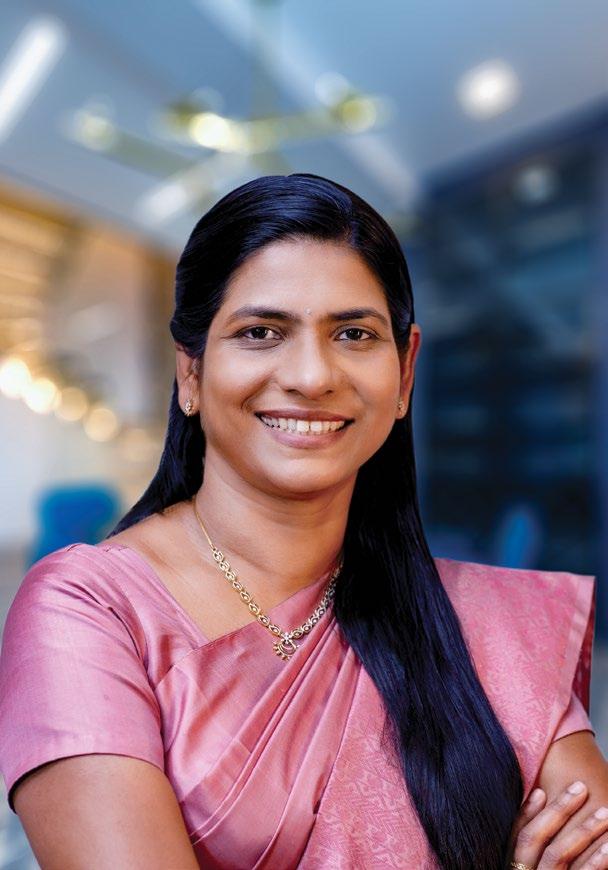
3 minute read
Gender Equality is Still a Distant Goal
Saadia Zahidi, the widely respected and accepted Managing Director of the multilateral agency, the World Economic Forum (WEF), wrote in the preface of the just published Global Gender Gap Report 2022 that accelerating (gender) parity must be a core part of the public and private agenda going forward. She wrote: “In 2022, amid multi-layered and compounding crises including the rising cost of living, the ongoing pandemic, the climate emergency and large-scale conflict and displacement, the progress towards gender parity is stalling. As leaders tackle a growing series of economic and political shocks, the risk of reversal is intensifying. Not only are millions of women and girls losing out on access and opportunity at present, this halt in progress towards parity is a catastrophe for the future of our economies, societies and communities.”
One could only agree with her arguments which stand to everybody’s reason. Despite making large scale economic progress, and in many cases women breaking the glass ceilings by making it to the top and gatecrashing into hitherto mail bastions, a lot more needs to be done in achieving gender parity in many economies. It is true that we may find women heading many corporations, powerful organisations and even nations, but the lot of the women living at the bottom of the pyramid has hardly changed over the years.
Advertisement
In fact, as Zahidi pointed out, new concerns are undoing whatever progress we made in the past by a greater degree and at a faster pace. This is not just the case with women and girls living in Afghanistan or elsewhere in Africa but very much true in the case of teenage girls in the US as well. Results of the Youth Risk Behavior Survey published by the Centers for Disease Control and Prevention (CDC), a US government agency which was in the forefront in the fight against Covid-19, published in February revealed that nearly 3 in 5 teen aged girls (57%) said they felt "persistently sad or hopeless." That's the highest rate in a decade. And 30% respondents said they have seriously considered dying by suicide — a percentage that increased by a whopping 60% over the past 10 years.
Not many studies of a similar nature are available in India but a recent report by the Statistics Ministry has come up with some eyeopening data relating to the field of finance. Thanks to the Central government’s sustained initiatives in recent times, women now own over one-third of deposit accounts in banks. However, the report reveals that only one fifth of the total deposit amount in scheduled commercial banks is owned by women. Also, only one of four bank employees are women and not even one-fourth of the female population holds managerial position across these financial organisations.
We have reason to believe that ever since the pandemic and subsequent economic turmoil, the lot of women in the country is going from bad to worse. This is because, in gender stereotyped households and patriarchal, if not misogynist societies, women suffer the worst when an economic downturn happens.
Research has shown that the share of women in household economic wealth shrank at a faster clip as mirrored in their access to education, health and other facilities. This deprivation of women in household economic resources is more often than not taken for granted.
This may explain the poor ranking that India got in the Global Gender Gap Index (GGGI) published by the WEF in February 2023. As per the report, India ranked at the 135th position in the GGGI map among the 146 countries covered by the research. To amplify the point, the world's fifth largest economy ranks 11th from the bottom of the pyramid of 146 nations. What is more alarming is the fact that our position has not changed much since the composite index was launched in 2006. GGGI ranks countries on a range of variables covering economic, political, education, health and employment.
Though there are some debates and disputes about the methodology used to construct the index, the larger truth of deprivation of women at various levels remains true as daylight. And this should be cause of worry for policy makers at every level as closing the gender gap should be treated as a primary condition for accelerated economic growth and get at the coveted figure of $5 trillion economy. This is because many studies have found that closing the gender gap can also close India’s output gap, the gap between the actual GDP and the potential GDP. A study by global consultancy firm McKinsey & Company has found that the stubborn gender gap is leading to widening the output gap and closing it can add $2.9 trillion by 2025 to the national output, 60% more than the projected GDP by 2025. That is almost 90% of our estimated GDP of $3.58 trillion this financial year.
Therefore, celebrating Women’s Day on 8th of March every year alone is not going to make lives promising for women. To use a fashionable phrase, if today’s fertiliser is tomorrow’s food security, moving to achieve gender parity now will ensure faster economic growth and sustainable development in the future










